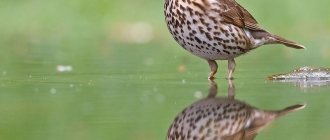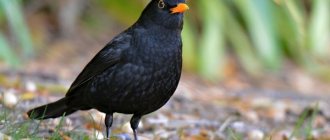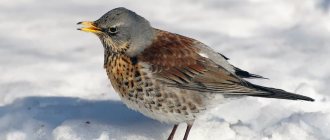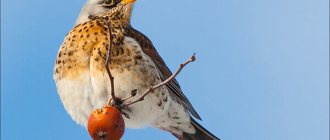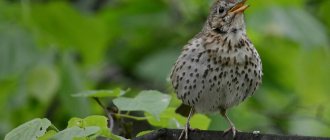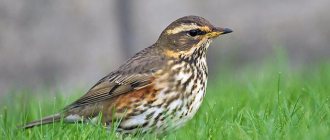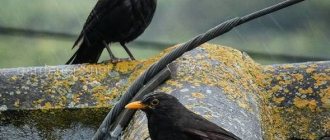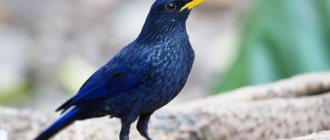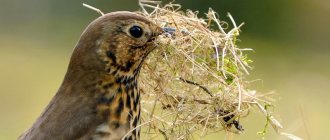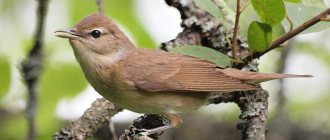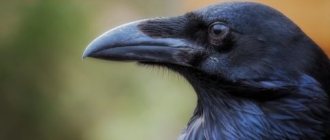The thrush tries to catch the eye of humans as little as possible, although he does not hide his wonderful talent for singing from us and allows people to enjoy it, despite the fact that his amazing singing is usually only heard by hunters who hunt for the thrush and other, more common species blackbirds.
Drozd: description
This is a nomadic species of birds that is found in many parts of our planet. Their lifestyle is due to the fact that during cold periods they migrate to warmer living conditions.
Appearance
These are small birds, with a body length of no more than 27 centimeters and a wingspan of no more than 38 centimeters. Depending on the species, individuals can weigh between 40 and 100 grams. The bird's eyes are located on the sides of its head, so thrushes tilt their heads to the side when searching for food. Due to the presence of characteristic external features, thrushes are not difficult to distinguish from other bird species.
The beak of this bird is relatively short and may have a gray or yellow tint. The nostrils are open, and the color of the plumage is not variegated. Many species have gray plumage with dark specks located randomly on the body. Some varieties are distinguished by a purely black tint of plumage. The wings are not long and have a rounded shape. The tail is rectangular in shape with 12 tail feathers. The legs are relatively short, but quite strong, and at their ends you can see fused horny plates.
Character and lifestyle
These birds have a difficult character, more restless, because, finding themselves in a difficult situation, the bird begins to make loud sounds. This especially happens when for some reason she lags behind her pack. Blackbirds are considered migratory birds, so they winter in comfortable conditions in warm regions. The birds do this unnoticed and silently, so many do not notice either the presence of blackbirds or their absence.
In search of food, blackbirds move along the surface of the earth with characteristic and frequent jumps, as well as long pauses between them. After wintering, they can return to their nesting sites, both as part of a flock and as individuals. If there is enough food for them, then they may postpone their migration for some time or may even stay for the winter.
Interesting moment! In the case of a solo flight, scientists believe that the birds may lag behind their flock or may go off course. Despite this, birds still find their natural habitats.
Having returned to their nesting sites in the spring, blackbirds begin building nests, which are placed either on stumps or in trees. If there are no predators within their nesting areas, then the birds place their nests directly on the ground.
How long do blackbirds live?
The lifespan of these birds depends on their living conditions, the presence of natural enemies and the availability of food supply. It is believed that blackbirds living in the wild can live from 11 to 15 years. In captivity, with proper maintenance, these birds live up to 17 and a half years. In natural conditions, which are distinguished by the absence of natural enemies and an abundance of food, blackbirds live no less.
Drozd - interesting facts
LAZY FATHER
The construction of the nest is done by the female. She also pre-selects a nesting site and a place for the nest. The male only stays nearby and, in case of danger, gives a signal - a characteristic whistle, a sharp crack, similar to the sound of dry peas falling, or a loud cry “cough... cough...”, sometimes even turning into a squeal. Deryaba sings for a short time and little by little.
Only the female incubates the eggs, starting this in early May. The clutch usually contains no more than four eggs, larger than those of other thrushes, covered with a greenish-yellow shell with small brown spots. Incubation lasts about two weeks. During this period, the male does not feed his partner, but stays nearby and occasionally accompanies her when she briefly leaves the clutch, going for food.
Only when blind and naked helpless chicks are born does the father, feeling responsible, begin to actively feed them together with the female. After 14-16 days, the chicks fledge, leave the nest and sit on branches near it. Parents continue to care for their offspring for some time, feeding the young, even if a second clutch has already appeared in the nest. And in the southern part of the range, this is not uncommon.
Types of blackbirds with photos and descriptions
Scientists have identified about 60 species of thrushes that live on our planet. About 20 species live in our country. The most famous among them are the song thrush, blackbird, fieldfare, white-browed thrush and mistletoe.
Song Thrush (Turdus philomelos)
Forest song thrushes are easy to identify by their pleasant, rich singing, comparable to the singing of a nightingale. In this case, the bird has a characteristic plumage:
- The back is distinguished by a brownish-brown tint.
- The abdominal area is white and slightly yellowish, with small dark spots.
In summer, the habitat of these birds extends to the territory of Central Russia, Siberia and the Caucasus. With the onset of winter cold, birds fly away to the forests of Asia, Eastern Europe and North Africa.
Important point! Song thrushes sing throughout the season, starting in April and ending in late autumn, when they begin preparing for their migration to the south.
Fieldfare (Turdus pilaris)
This species of birds does not have any special vocal characteristics. This bird sings relatively quietly and unattractively. It is considered one of the most common species living in our country, with the exception of particularly cold regions of northern latitudes. The size of the fieldfare is about the same as the size of starlings, and its appearance is quite expressive and more attractive compared to other varieties.
The back area of these birds is painted in rather variegated tones, while the abdomen area is white, and on the sides you can see a yellowish tint. They generally lead a gregarious lifestyle, but try to build their nests at a considerable distance from each other. Many consider this thrush to be a harmful bird, which, migrating as part of a large flock, can cause serious damage to agricultural crops.
Blackbird (Turdus merula)
This variety not only has a bright, memorable appearance, but is also distinguished by its excellent voice characteristics. This name is more suitable for males, which are distinguished by their jet-black color. As for females, their body color is more varied. This bird has a fairly powerful beak, and its eyes are highlighted with a bright yellow edging.
Interesting to know! Blackbirds do not gather in large flocks, but prefer to lead a solitary lifestyle. At the same time, they build their nests at a considerable distance from their relatives.
White-browed Thrush (Turdus iliacus)
This species of thrush is found in Asia and North America. These birds are adapted to colder living conditions, so they begin breeding in April. There are a number of external signs that allow you to distinguish the white-browed thrush from other species of blackbirds. These include:
- The back area is painted in brownish-green tones.
- The sides of this blackbird are dark red in color.
- The abdomen is gray-white, with numerous spots of light and dark tones.
- The tips of the wings have a red edging.
- A white stripe passes over the eyes, in the form of an eyebrow.
The thrush is especially audible in midsummer, when it delights the surrounding world with its clear voice. Despite the short melodies, they deserve to be listened to.
Missile thrush (Turdus viscivorus)
The largest bird of this family lives mainly within Central Europe. The nests of such birds can be found in gardens, groves, forests, bushes, and also in park areas. The basis of the diet is the berries of mistletoe, rowan, thorn and yew. Earthworms, fruit pulp, and small insects living in the soil are special food components that are considered delicacies. It is quite easy to recognize a representative of this family by its long tail, as well as by its white belly, which is edged with dark spots. The lower part of the wings is white, and the back area is grayish-brown.
Wood thrush (Monticola gularis)
It is considered the smallest representative of its family. The wood thrush has another name - the white-throated blackbird. This bird nests either in mixed or coniferous forests growing on the slopes of hills. The wood thrush is distinguished by the presence of variegated plumage, and its color is brighter in males. The head and shoulders are characterized by the presence of blue-blue tones, and splashes of white can be seen on the wings.
The bird got its name because the thrush has a small white spot on its throat. Bright red color is present in the color of the chest and neck, and the abdomen has a light red coloring. The wood thrush sings quite attractively, although its singing is more “sad”, but sometimes solemn bright notes slip through.
Shama thrush (Copsychus malabaricus)
This bird lives in the equatorial zone, preferring the dense thickets of India, as well as Southeast Asia, for nesting. The main color of males is black, but the neck area is chestnut-colored. The lower part of the tail is painted white. The beak of this species of thrush is almost black, and the legs are bright pink. As for females, their main color is somewhat lighter.
Compared to other representatives of their family, Shama thrushes consume more animal components as food, in the form of beetles, worms, cockroaches, grasshoppers, etc., in other words, their diet is more nutritious.
The Shama Thrush belongs to the category of birds that are perfect for keeping in captivity because they quickly get used to their environment. It is worth keeping this bird at home to listen to how it sings, and its singing is very diverse.
Common Thrush (Turdus unicolor)
These birds are found within the territories of South Asia, ranging from Nepal to Pakistan. As a result of seasonal migrations, it is not problematic to find blackbirds off the coast of Central Europe.
Females are distinguished by an olive-brown tint on the abdomen, as well as reddish sides. The throat area is covered with a large number of motley spots. As for the males, their back area is colored in characteristic gray-bluish tones, while the abdominal area is light, and the paws are brown.
Wandering Thrush (Turdus migratorius)
These birds inhabit the gardens and parks of North America, although recently individual individuals have begun to be found in some European countries. The main color of individuals is black or gray-dark, and the chest and abdomen area is painted in red-orange shades. The main diet consists of various types of butterflies, bugs, and ants. Moreover, when the fruits of plants such as cherries, sweet cherries, sumac, blackberries and raspberries begin to ripen, these birds feast on them with pleasure.
Blackbirds. Photos of different blackbirds accompanied by the voice of a song thrush
Lifestyle
In the southern mountainous regions, the deryaba actively chooses thickets of tree-like juniper for nesting, the fruits of which it readily feeds on in autumn and winter. In most of its northern range, this thrush clearly prefers to nest in old pine forests, especially where juniper thickets still remain. He feeds very willingly on the cones of this breed. Unlike many other thrushes, when possible, the thrush prefers to nest in the most remote corners of old forests. The maximum density at nesting sites, apparently, is in areas of old high-trunk white moss pine forests with juniper, especially located on the tops and slopes of ravines and hills, near forest streams, rivers, springs and damp swampy meadows at the bottoms of ravines and forest valleys. The combination of a tall juniper forest on the top of a cliff or hill with a forest river, stream or swampy meadow is the most typical nesting site of the species. The thrush, like many other thrushes, actively uses damp ravine meadows in the forest and moist meadows along the banks of forest rivers and streams to collect food, especially when feeding chicks. Like other thrushes, the deryaba readily collects earthworms and mollusks.
Both in the mountains and on the plains, the mistletoe often nests in mixed, spruce and deciduous forests, as well as in floodplain forests. Its nests are found on spruce, aspen, birch, and fruit trees. The nests of these thrushes are often found on spruce trees and in closed spruce forests in the taiga zone. In Siberia and Altai, deryaba is found in light deciduous forests and even in pure birch forests. In the mountains, its nests are found on stone cornices. It is believed that this thrush nests in separate pairs. However, in the high-trunked juniper forests of the Tien Shan and in the juniper forests of the European and Ural taiga, nests of deryabs were found at a distance of 50 and even 30 m. In such settlements there may be 7-15 nests.
What do blackbirds eat in the wild?
The diet of blackbirds largely depends on the characteristics of the season. Naturally, in winter it is more scarce and consists of fruits, berries and plant seeds remaining on trees or shrubs. In summer, this diet is more extensive, so birds try to stay close to areas where berries and fruits ripen. In lean years, these birds raid the plants of gardeners and gardeners and can easily destroy the entire crop.
Interesting to know! Birds cannot do without food containing a sufficient amount of protein, so they happily feed on beetles, earthworms, various insects and even snails.
Reproduction and offspring
With the onset of spring, birds begin to prepare their nests for the breeding process. They strengthen and insulate them, using dry branches, straw, feathers, leaves, as well as moss and lichen for these purposes. Clay is also used to strengthen the frame. On the outside, it serves as the component that improves the mechanical properties of the socket. From the inside, down or feathers are used for insulation.
The thrush's nest can be located at a height of about 6 meters. The female lays up to 6 eggs, and during the season, under favorable conditions, she can do this twice. The eggs can be quite variegated in color. When re-laying eggs, it should be the end of June, the beginning of July.
The female incubates the eggs for 2 weeks. After the chicks are born, both parents feed them. They do this one by one, flying out of the nest up to 200 times per day. Within a couple of weeks, at most, the chicks are able to leave the parental nest. Unfortunately, not all of them will be able to survive, since not all of them can get food for themselves.
Singing
In central Russia, the first rashes appear in the spring from the beginning or mid-April. The main flight takes place in mid-April. Mass formation of pairs usually begins 5-7 days after the appearance of the first birds. The singing of the deryaba, unlike the singing of other blackbirds, can not be heard often, since it sings relatively little, and its period of active singing is shorter. The song of the deryaba is short, quite sonorous, whistling. It sounds a little like the song of a blackbird. Each male can have quite a few different types of songs, which are repeated and reproduced with great precision. In the repertoires of the best singers there are songs with especially full, beautiful figured or frequency-modulated elements. There are songs whose elements form magnificent motifs, with strictly regular musical intervals.
Natural enemies
Arrogant crows often destroy thrush nests and steal their eggs. Natural enemies include woodpeckers, squirrels, jays, owls and birds of prey. Humans also pose a significant threat to the lives of birds.
Interesting moment! Blackbirds get along well next to defenseless birds such as finches and flycatchers. Oddly enough, blackbirds help these birds drive away their natural enemies from their nests.
